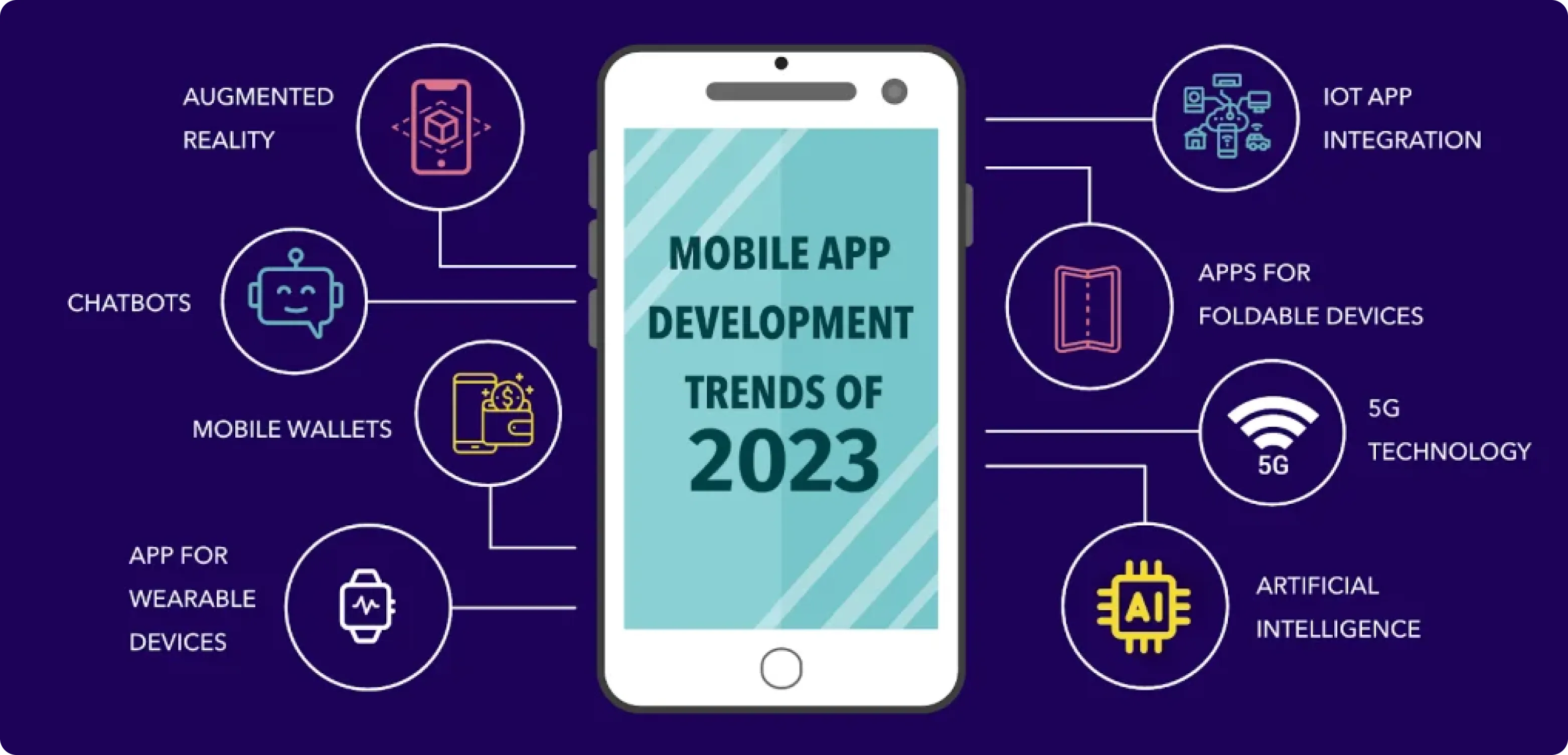App development Trends for 2023
The need for app creation is expanding as society depends more and
more on technology and mobile devices. In the coming years, we can
expect to see several new trends and advancements in the field of
app development. Here are some of the top trends that are likely to
dominate the app development landscape in 2023:
In 2023, it is expected that the IoT will continue to grow and
evolve, and there are a number of trends that are likely to shape
the development of the IoT in the coming years. Here are some of the
top IoT trends that are expected to emerge in 2023:
Artificial intelligence and machine learning
Artificial intelligence and machine learning are already being used
in a variety of applications, and this trend is expected to continue
in the coming years. These technologies can be used to improve the
functionality and user experience of apps by enabling them to learn
and adapt to user behavior. For example, a messaging app might use
machine learning to suggest responses to messages based on the
user's previous conversations.
The Internet of Things (IoT) is the interconnected network of
physical devices, vehicles, and other objects that are equipped with
sensors and software to exchange data over the internet. In the
coming years, we can expect to see a proliferation of IoT-enabled
devices, and app developers will need to consider how to build apps
that can connect to and interact with these devices.
The rollout of 5G networks is expected to bring significant
improvements in terms of speed and connectivity, and this will have
a major impact on app development. With 5G, apps will be able to
transmit and receive data more quickly and reliably, enabling new
capabilities such as real-time streaming and virtual reality. Edge
computing, which refers to the processing of data at the edge of a
network rather than in a centralized location, will also become more
prevalent in the coming years. This will allow for faster processing
of data and a more seamless user experience.
Augmented and virtual reality
Augmented reality (AR) and virtual reality (VR) technologies have
already made their mark in the gaming and entertainment industries,
but they are also starting to be used in other fields such as
education, healthcare, and retail. As these technologies continue to
improve and become more accessible, we can expect to see more app
developers incorporating AR and VR into their products.
Cross-platform development
In the past, app developers had to build separate versions of their
apps for each platform (e.g. iOS, Android, etc.). However, the rise
of cross-platform development tools such as Flutter and React Native
has made it easier for developers to build apps that can run on
multiple platforms with a single codebase. This trend is expected to
continue in the coming years, as it allows developers to reach a
wider audience with less effort.
With the increasing amount of personal data being collected and
stored by apps, privacy and security will continue to be a major
concern for app developers. We can expect to see more emphasis on
secure coding practices and the use of encryption to protect user
data. In addition, app developers will need to be transparent about
their data collection and usage policies to build trust with their
users. Mobile App Development Services
Personalization is already a key feature in many apps, and this
trend is expected to continue in the coming years. By using data
such as location, demographics, and user behavior, apps can tailor
their content and recommendations to individual users. This can help
to improve the user experience and keep users engaged with the app.
Instant apps are a type of app that allows users to access certain
features without having to install the app on their device. This can
be particularly useful for apps that are infrequently used or for
users who are hesitant to download an app due to storage constraints
or privacy concerns. We can expect to see more app developers taking
advantage of this technology in.


















